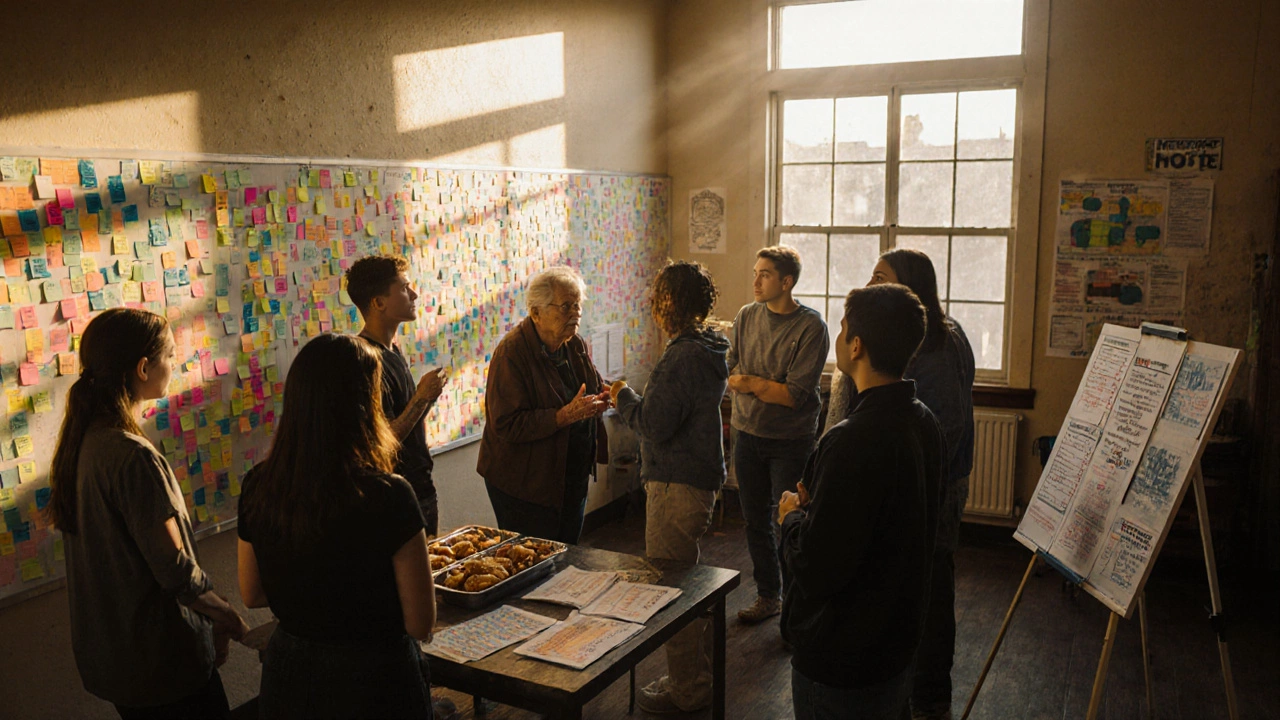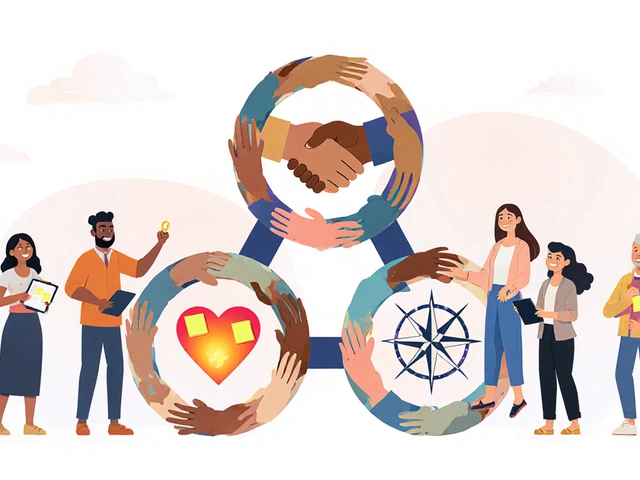3 P's Engagement Assessment Tool
Assess Your Community Engagement Approach
This tool helps you evaluate how effectively you're applying the 3 P's framework to your community outreach. Answer the questions to receive a personalized assessment and recommendations.
Participation
Partnership
Purpose
Recommendations
3 P's of engagement refer to a simple framework that helps groups design, run, and evaluate outreach activities. By focusing on Participation, Partnership and Purpose, organizations can move from one‑off events to lasting community impact. This article breaks down each "P," shows how to apply them, and offers concrete tools for measuring success.
Quick Takeaways
- Participation means active involvement of community members, not just attendance.
- Partnership builds trust by sharing resources and decision‑making with local stakeholders.
- Purpose stays clear and measurable; every activity should link back to a defined goal.
- Use simple metrics (sign‑ups, volunteer hours, feedback scores) to track progress.
- Iterate: review data, adjust the P's, and repeat.
What are the 3 P's?
Each "P" tackles a different layer of community outreach:
- Participation: invites community members to co‑create and co‑deliver programs. Think of town‑hall workshops, youth‑led clean‑ups, or crowdsourced idea boxes. The goal is to shift people from observers to contributors.
- Partnership: goes beyond occasional volunteers. It means forming long‑term alliances with schools, local businesses, NGOs, or municipal agencies. Partnerships spread risk, pool budgets, and increase credibility.
- Purpose: a clear, shared objective that answers "why" the outreach exists. Whether it’s reducing plastic waste, increasing literacy rates, or improving mental‑health awareness, purpose provides the north star for every decision.
How to Apply Participation
Community Outreach projects succeed when locals feel ownership. Start with a listening session: ask open‑ended questions, record suggestions, and let participants vote on priorities. Use low‑tech tools like sticky notes or digital polls - the simpler, the better.
Next, create role ladders. A first‑time volunteer might handle set‑up, while a seasoned member could lead a workshop. This progression keeps people engaged and offers visible growth paths.
Finally, close the loop. Share post‑event reports, celebrate milestones, and publicly acknowledge contributors. Recognition turns a one‑off act into a habit.
How to Build Strong Partnerships
Identify Stakeholder groups that share your purpose. Map out their strengths: a local bakery may provide snacks, a high‑school art club can design flyers, and a city council office can grant permits.
Draft a partnership charter. Include shared goals, resource commitments, decision‑making rules, and a review schedule. A written agreement prevents misunderstandings and makes it easy to scale the collaboration.
Maintain regular check‑ins. A monthly coffee meeting or a shared Slack channel keeps momentum alive and surfaces challenges before they become roadblocks.

Defining a Clear Purpose
Purpose should be specific, measurable, achievable, relevant, and time‑bound (SMART). Instead of "improve health," try "increase the number of adults completing a free fitness class by 25% within six months."
Link purpose to community values. Conduct a quick survey asking participants what matters most to them. Aligning your purpose with those values fuels enthusiasm and improves retention.
Document the purpose in all communications - flyers, social posts, and volunteer briefings. Consistency reinforces the message and helps new partners understand the mission instantly.
Common Pitfalls and How to Avoid Them
- One‑size‑fits‑all events: Not every community segment wants the same activity. Segment your audience and tailor formats.
- Volunteer burnout: Rotate responsibilities, offer skill‑building workshops, and recognize effort publicly.
- Vague goals: Without a defined purpose, you can’t measure impact. Use simple KPIs like sign‑ups, hours contributed, or satisfaction scores.
- Poor communication: Keep partners in the loop with concise monthly updates.
Measuring Success
Effective Impact Measurement blends quantitative and qualitative data:
- Quantitative metrics: attendance numbers, volunteer hours, funds raised, social‑media reach.
- Qualitative insights: post‑event surveys, focus groups, anecdotal stories.
- Long‑term indicators: changes in community behavior, repeat participation rates, partnership renewal rates.
Plot these metrics on a simple dashboard. Review quarterly, adjust the 3 P's, and report back to the community - transparency builds trust.

Tools & Resources
| Tool | Supports | Key Feature |
|---|---|---|
| Google Forms | Participation | Simple surveys & sign‑ups |
| Slack | Partnership | Real‑time communication |
| Trello | Purpose | Task tracking & goal timelines |
| Canva | Participation & Partnership | Quick visual assets |
| PowerBI (free tier) | Impact Measurement | Interactive dashboards |
Putting It All Together: A Mini‑Checklist
- Identify community needs → define Purpose.
- Invite locals to shape the solution → ensure genuine Participation.
- Map and formalize resource‑sharing partners → solidify Partnership.
- Choose 2‑3 simple metrics and set up a dashboard.
- Review data every quarter, celebrate wins, and iterate.
When you apply these steps, the 3 P's become more than buzzwords - they turn into a repeatable system that fuels sustainable community impact.
Frequently Asked Questions
What is the main difference between Participation and Partnership?
Participation focuses on getting individuals actively involved in program activities, while Partnership is about forming long‑term collaborations with organizations that share resources, expertise, and decision‑making.
How many metrics should I track for Impact Measurement?
Start with three core metrics: a quantitative count (e.g., volunteer hours), a qualitative indicator (e.g., satisfaction score), and a long‑term outcome (e.g., repeat participation rate). Add more only if they directly inform your purpose.
Can the 3 P's be used for small, one‑time events?
Yes, but keep it lightweight. Even a single event benefits from a clear purpose, a handful of participants who help plan, and at least one partner (like a venue or sponsor) to share the load.
What are common signs of volunteer burnout?
Frequent no‑shows, declining enthusiasm, or volunteers taking on too many tasks without breaks. Address it by rotating roles, offering training, and publicly recognizing effort.
How often should I revisit the 3 P's?
A quarterly review works for most community programs. If you’re running fast‑paced campaigns, a monthly check‑in may be better.
Ready to give the 3 P's a try? Start by drafting a one‑page purpose statement and share it with a few trusted community members. The sooner you launch, the quicker you’ll see the ripple effect of genuine engagement.
3 P's engagement isn’t a secret formula - it’s a practical checklist that helps any group turn ideas into lasting impact.








